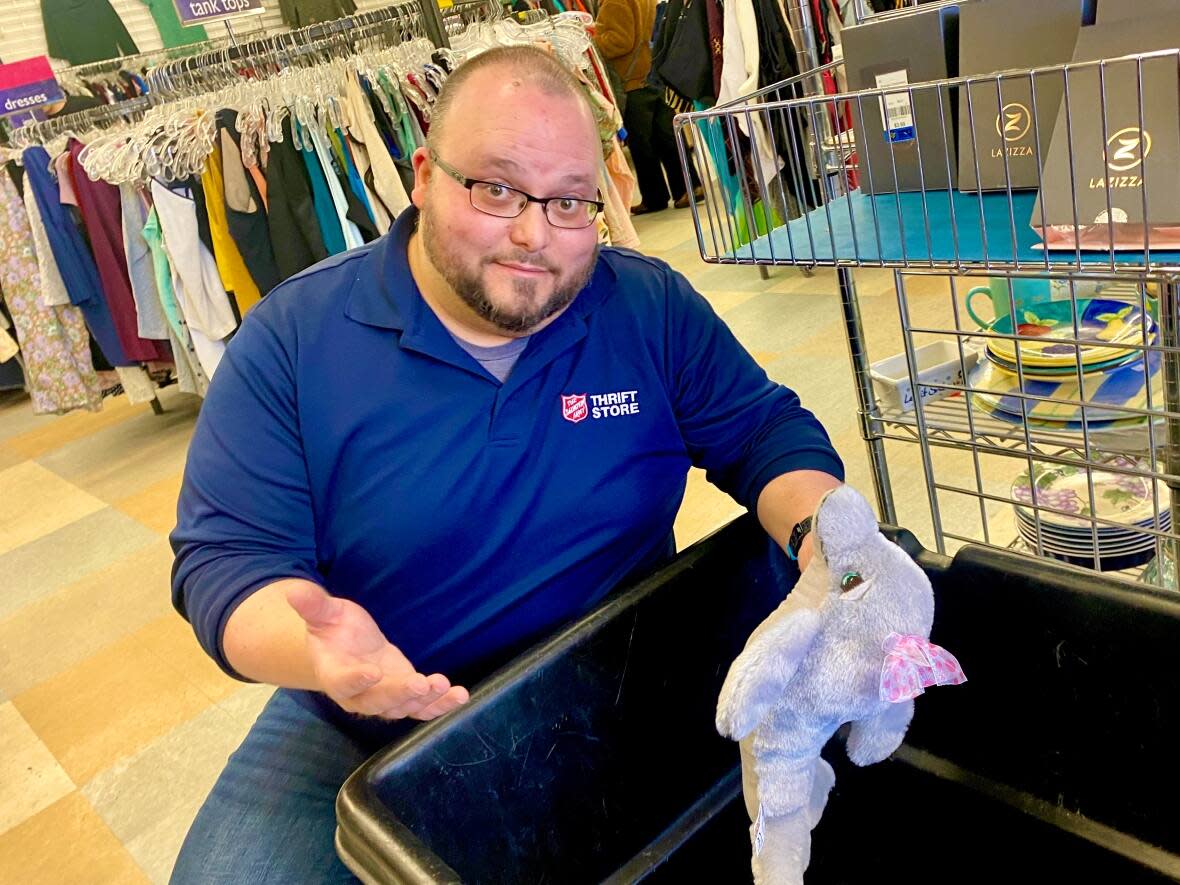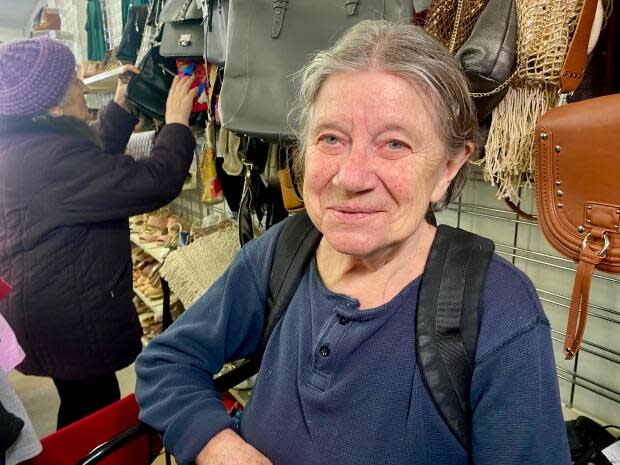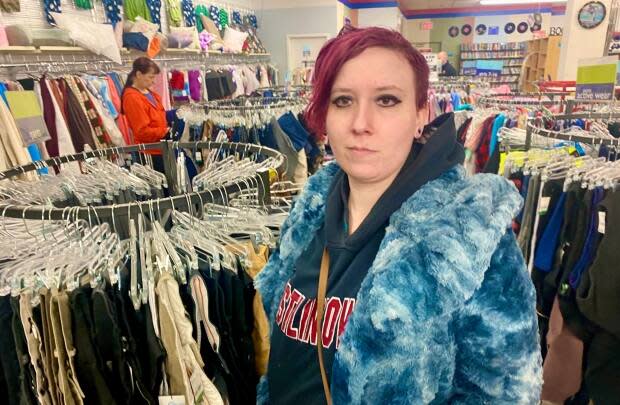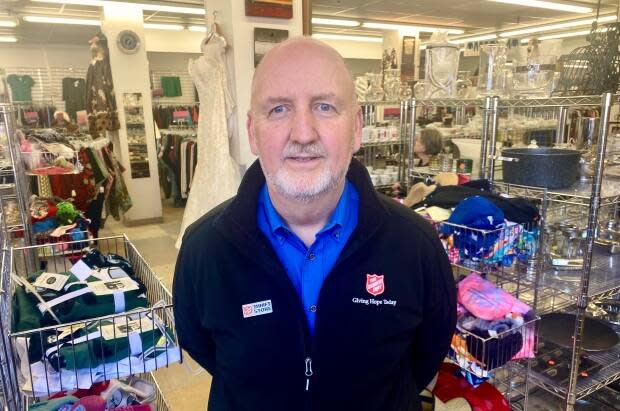With sales up and donations down, Toronto-area Salvation Army stores can't keep their bins full

Salvation Army thrift stores in the Greater Toronto Area are looking emptier than usual, and while sales are up, the charity says a lack of donations has them worried about what could happen next.
Ted Troughton, managing director of The Salvation Army, says sales have increased 19 per cent over the last year at Toronto-area stores. But the near-empty shelves and donation bins are prompting concern.
"Our business runs on donations," said district manager Matthew Brown. "When they start drying up, so too do the guests that want to shop with us…They're coming to see what's new"
Staff say they've seen an increase in people who are in tougher financial situations lately, but also newer thrifters coming for a host of reasons — from fashionistas to the eco-conscious. While it's unclear exactly how much of a drop in donations the organization is facing, staff say they can't serve any of their customers to the level they'd like without more.
Brown says he has seen men looking through sparse clothing racks for a coat or an outfit for a job interview, and leave minutes later because there's nothing for them.
That's a concern for The Salvation Army, which has a mission of lifting people up, he says.
"A lot of people that are in that situation might not have the money to walk into a standard department store and just drop $100 on something," said Brown. "They'd much rather come here where they can buy an entire outfit for a job interview for $20."
The thrill of the hunt
Anna Cavalheiro says for her, thrifting is primarily about the thrill of the hunt. Cavalherio is part of a large contingent shopping at charity stores for years.
"Sometimes I go, 'Oh wow,' and nearly jump out of my skin when I find something great," she said. "That's what keeps me coming back."
Catherine Holliday, a senior, said the prices are a big draw for her.
"Once you retire you've got to live on less," she said.

As a regular Holliday has been watching what's happening lately at her local store.
"There are more people shopping here," she said "Just like there's more people going to the food bank."
Tiffany Cutting, 27, said she likes having the option to thrift items for only a few dollars, like the shoes she picked up for $5 a few weeks ago.
"You can get a lot of stuff for a decent price," she said.

Second-hand as a hustle
Many in Cutting's generation are buying for themselves, but others are also buying hoping to resell, according to experts.
Deborah King, the Founder of Global Measure, a social enterprise certifying sustainable and ethical fashion businesses, says Gen Z is engaging in the circular economy — of which thrifting is a part — in significant numbers.
The circular economy is one that recovers as much value as possible from something by reusing, repairing or repurposing, looking at waste as a resource instead of a cost.
CBC Toronto observed several focused young shoppers in the Parkdale Salvation Army store picking through racks.
"They're technically spending less per item, but they're buying more items," said King. Many are also hoping to re-sell items for a higher profit margin at some point, she added.

Giving articles of clothing a longer life is great news for the environment, said King.
But it may not necessarily be great news for charity shops like The Salvation Army, seeking more donations.
Selling instead of donating
Anika Kozlowski, a professor of fashion design ethics and sustainability at Toronto Metropolitan University, said buying second-hand has become de-stigmatized.
"More and more people are just getting more comfortable with shopping second-hand as they see it become more popular, just in media and [among] influencers," she said.
She says young people are mixing new and thrifted finds into their wardrobes. But when they've had enough with a garment, they aren't just putting what they don't want in a bag and taking it to The Salvation Army.
"They're going to sell what they can where they think they'll make the most money off of it and then they'll donate what they don't really think is worth their time to sell," she said.
The second-hand space has gotten more competitive, with more apps and online options to sell goods, she says. Online thrift giants, like thredUP are thriving, she says.
"People are definitely spending more in the second-hand space," she said. "The market value is increasing every year. And those projections are going up," she said.

Troughton says he knows The Salvation Army has many generous donors and expects peaks and valleys. He's just hoping donors will help them through this tough spot sooner than later.
"Why not start spring cleaning right now? It's a great opportunity," he said.


